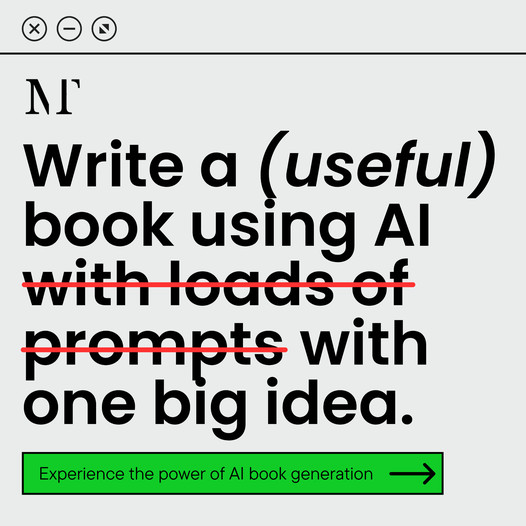The Landscape of AI Writing Tools
AI writing platforms are flipping the writing game on its head for authors, creators, and students alike. Knowing your way around these tools is key if you’re thinking about using AI for your writing projects.
How AI is Shaping Content Creation
AI’s influence on content creation is huge, rolling out tools that make writing smoother and easier. Around $14 billion every year is the worth of the “creator economy,” and AI tools are like the secret weapon for solo writers aiming to reach readers and earn a living (Harvard Business Review). They handle the mundane stuff, letting writers concentrate on crafting the juicier bits.
AI-based natural language processing (NLP) systems jazz up both productivity and creativity. Some folks worry, though, that leaning too much on these gadgets might stifle learning, like in schools where thinking critically is a big deal. As AI writing software levels up, it changes the game for how we churn out, edit, and share content.
Evolution of AI Writing Tools
AI writing tech has come a long way from just spotting typos to being full-on writing sidekicks capable of whipping up content. The first wave of writing programs zeroed in on fixing spelling and grammar. Now, with the boom in AI tech, we’ve got heavy hitters like Jasper AI, Rytr, and Copy.ai, which are all about speeding up the drafting process (Authority Hacker).
But with all the good, comes some hiccups, especially in schools. Quick-fix info and auto-summaries upset the apple cart for teaching old-school writing skills, plus there are sticky issues like copying work (NC State University). As these tools get brainier, the chat about using them right keeps evolving, nudging writers to rethink their strategies in our digital playground.
Curious about these groundbreaking tools? Check out what novelcrafter writing software can do, or take a peek at what’s on offer with novelcrafter.
Notable AI Writing Platforms
There’s a bunch of AI writing platforms out there that help with different kinds of writing tasks. Knowing what each one can do helps folks pick the best tool for what they need. Here’s a rundown of some top platforms.
Buffer AI Assistant
Buffer made a handy AI tool for cooking up social media posts. It gets how X (the artist formerly known as Twitter), LinkedIn, and Instagram each have their own vibe. This makes it easier to whip up posts that match what each crowd digs.
| Feature | Description |
|---|---|
| Platform Compatibility | X, LinkedIn, Instagram |
| Customization | Makes specific content for each social media crowd |
Jasper AI
Jasper is aimed at marketing folks, helping them hit those campaign goals. It cooks up text for a bunch of stuff like landing pages and marketing plans. Plus, it throws in chat features and a Chrome extension to make life a little easier. Folks love how fast it cranks out solid copy.
| Feature | Description |
|---|---|
| Target Users | Marketing teams |
| Content Types | Landing pages, marketing campaigns |
| Extensions | Comes with a Chrome extension |
Copy.ai
Copy.ai is all about cutting out boring, repetitive writing chores, a real time-saver for sales and marketing groups. You can either use what’s all ready to go or tweak things to your liking for those never-ending writing jobs. Perfect for those who’ve got lots of marketing copy to knock out fast.
 What Poetry Feels Like
What Poetry Feels Like| Feature | Description |
|---|---|
| Use Case | Automating repetitive writing tasks |
| Workflows | Has both pre-set and tweakable workflows |
Writer
Writer’s the go-to for those looking to polish up their stuff. With goodies like Blog Builder, Recaps, and Ask Writer, it makes various writing jobs smoother. Writers and content crews rave about it for boosting quality and keeping everything in line project to project.
| Feature | Description |
|---|---|
| Primary Purpose | Sprucing up and fine-tuning content |
| Key Features | Blog Builder, Recaps, Ask Writer |
Hubspot Breeze
Hubspot Breeze is about automating content marketing, helping folks shape, manage, and make their content shine. It’s a mix of CRM tools with AI content ideas to sharpen marketing plans and boost content results.
| Feature | Description |
|---|---|
| Integration | Mixes CRM with AI writing assists |
| Focus | Automating content marketing |
These AI writing platforms pack some serious punch, each crafted for different needs—be it for social media, marketing, or giving your drafts a makeover. For authors hunting for awesome writing software, these tools are super handy for upping their game in writing and creativity. If you’re itching for even more on-the-edge writing tools, hop over to novelcrafter writing software.
Application of AI in Writing
AI-driven writing tools are shaking up how content gets made these days, offering writers some handy perks. This part dives into what makes Natural Language Processing (NLP) a big deal, how AI is creeping into education, and the ethical head-scratchers that pop up with AI-written stuff.
Natural Language Processing Benefits
NLP is like that helpful assistant you didn’t know you needed, making writing faster and less painful by taking care of the boring, repetitive bits. Writers can kick back and tackle the fun, tricky stuff while AI handles the grunt work (NC State University). But here’s the thing: if you let AI do all the heavy lifting, your brain might get a little lazy on the critical thinking front.
Check out how NLP jazzes up our writing game with these features:
| Feature | Perk |
|---|---|
| Automatic Summarization | Cuts down on time spent skimming through stuff |
| Grammar and Spell Check | Cleans up errors and makes writing clearer |
| Style Suggestions | Makes your writing look slick and sound smooth |
| Content Generation | Gives you fresh ideas when you’re stuck |
NLP lets writers play around with different styles, boosting creativity and speed without losing their skills.
Integrating AI in Education
Schools are getting on board with AI too, because everyone needs to keep up with the times. Teachers are starting to blend AI tools into lessons, showing students both the cool and not-so-cool parts of using AI to write (NC State University). With AI as a sidekick, students can explore a bunch of writing styles while keeping their brains sharp.
Here are some classroom tricks for AI integration:
- Get students using AI writing tools for brainstorming or drafting, so they can see what these tools can do.
- Talk about the ethics of AI-created content, making sure students get the importance of originality and creativity.
- Teach students to tell the difference between what a machine wrote and what a human wrote.
Ethical Concerns with AI Content
AI writing tools are awesome, but they also bring some eyebrow-raising ethical issues. Who owns what? Is it creative? Is it ripping off someone else’s work? Advanced tools like GPT-3 can mash up existing stuff into something new, making it harder to spot plagiarism and figure out who really wrote something (NC State University).
Some big ethical worries are:
- Copycat Problems: Students might take shortcuts by using AI-generated text, dodging plagiarism detectors and messing with academic honesty.
- Waning Creativity: Going heavy on AI tech could dampen a writer’s natural flair and personal style.
- Impact on Jobs: The rise of AI in writing brings up questions about who gets credit and whether creators get a fair shake.
These tricky issues call for a thoughtful approach, making sure AI tools get used wisely while writers keep their unique voices. Curious about AI’s mark on writing? Check out ai-assisted novel writing or writing software with ai integration.
Best AI Writing Software
For writers looking to jazz up their workflow, keeping it efficient and sprinkled with creativity, several AI writing helpers have shown to be real game-changers. Here’s the skinny on some of the hottest selections around:
Jasper AI (Jarvis AI)
Previously known as Jasper AI, this tool’s still packing a punch in the AI writing arena. Offering more features than you can shake a stick at, like a whiz-bang long-form assistant and a snazzy collection of 50+ templates, this platform is built for versatility. And it speaks a load of languages too, which is quite nifty if you’re working on projects in different tongues. Toss in some nifty add-ons and tools, and you’ve got a companion that’s as solid as they come on your writing journey.
| Feature | Details |
|---|---|
| Templates | 50+ |
| Language Support | Multi-language |
| Pricing | Based on plan selection |
Rytr
Looking for something that’s easy on the wallet and even easier to use? Rytr’s got you covered. With GPT-3 powering its engine, this platform’s got 30+ writing scenarios ready to go. Alright, there might be a bit of a learning curve at the start, but hang in there. Once you get the hang of it, you’re golden. Options range from zilch to $29/month for the primo package, a tempting offer for any wordsmith.
| Feature | Details |
|---|---|
| Use Cases | 30+ |
| Language Support | Multi-language |
| Pricing | Free – $29/month |
Copy AI
Copy AI’s the speedy little whiz-kid on the block, cranking out content at lightning speed thanks again to GPT-3. With over 90 templates to smash through writer’s block and a super friendly interface, it’s a hit globally with its 25+ language support. You can get in for free or opt for the Pro ride at $35/month (Authority Hacker).
| Feature | Details |
|---|---|
| Templates | 90+ |
| Language Support | 25+ |
| Pricing | Free – $35/month |
Writesonic
Writesonic is your go-to for crafting both snappy short-form and lush long-form types of work. With a strong GPT-3 backbone, and multilingual support, this toolkit is as flexible as a yoga instructor. Ranging from $9/month for the Saver Plan up to $29/month for the whole shebang, it gives writers a wallet-friendly ride (Authority Hacker).
| Feature | Details |
|---|---|
| Language Support | 30+ |
| Pricing | $9 – $29/month |
ContentBox.AI
ContentBox.AI may require you to fork out a bit more cash, but it’s got some primo content honing capabilities to match its basic generation tools. It’s packing 12 templates and a decent selection of 11 languages. Starting at $49/month, this one’s for those who don’t mind paying a bit extra to keep things polished (Authority Hacker).
| Feature | Details |
|---|---|
| Templates | 12+ |
| Language Support | 11 |
| Pricing | Starts at $49/month |
For those diving into the nitty-gritty of AI writing gear, these options are top-notch: a perfect blend of tech and creativity to make any piece a breeze. With AI’s help, writing becomes both more fun and a whole lot less like pulling teeth.
Generative AI Advancements
Generative AI is shaking up how we write stuff by jazzing up what writers can do using futuristic tech. This bit is all about how AI is making writing a breeze, plus some bumps and snags on the ethics road.
Enhancing Content Creation
Generative AI, especially with natural language processing (NLP), is like your new best friend for knocking out the boring writing chores. Writers can now kick back and focus on the cool parts of writing while letting AI handle the grunt work. For instance, AI can whip up outlines, offer handy fixes, and churn out content in no time. This tech boosts creativity too, throwing in fresh takes and sparking ideas authors might not dream up solo, making it a breeze to cook up new books or articles.
| Benefit | Description |
|---|---|
| Saves Time | Handles the dull stuff, freeing up brain power for the tricky bits. |
| Spurs Creativity | Tosses out new ideas and different angles. |
| Fast Drafting | Knocks up content quickly, which jumpstarts idea sessions. |
| Easy Editing | Helps tidy and polish your masterpiece. |
Using AI for writing isn’t just for fun; teachers need to weave it into how they teach. This combo keeps writing styles fresh and sharpens the mind for critical thinking. When you mix AI with old-school writing and learning, it opens doors to a bigger understanding of creativity, as noted by NC State University.
Risks and Ethical Challenges
Even with all the goodies, using generative AI isn’t all sunshine and rainbows. It’s got its share of ethical head-scratchers. Who owns what? Is it plagiarism if a bot wrote it? Models like GPT-3 shake the old rules with their snappy summaries of existing stuff, stirring up copyright squabbles and making plagiarism harder to spot.
And don’t forget biases in AI. If the data it’s trained on is skewed, watch out for biased content. You could end up with fake news or deepfakes if there’s no watchful eye. Plus, leaning too much on AI-generated work can curb your own creative instincts since you might start trusting the bots over your gut (Clemson University – Writing Resources).
To sum it up, AI writing tools are like a Swiss Army knife for writers, offering loads of help but also bringing some ethical fog. Balancing AI’s help with good old human smarts is key for keeping creativity alive and avoiding pitfalls. For more tips on the smart use of AI in writing, check out ai writing assistant for authors and best tools for fiction authors.
Academic Writing with AI
Benefits and Pitfalls
Writing with AI tools is like having a helpful buddy checking your work. These platforms can polish your academic writing, making it easier to read and bumping up that grammar game for things like grant proposals and journal articles. AI’s making big waves lately, creating stuff that’s almost too human. But hey, there are some hiccups along the way. Even when AI gets the info right, you might trip over some unexpected errors. Take it from Elsevier, they warn about trusting AI too much and accidentally messing with your research’s trustworthiness.
| What’s Great About AI | Things to Watch Out For |
|---|---|
| Grammar gains | Whoopsie mistakes |
| Smoother reading | Trust issues |
| Save some time | Getting a bit too cozy with tech |
Supervision and Accuracy
While AI makes writing quicker and slicker, it doesn’t mean you can snooze on the job. Keep an eye on what the tech spits out—errors and bizarre bits can sneak in. There are rules, apparently, saying AI should be your assistant, not the one-word-smithing entire sentences. The final print is still on you, as Elsevier points out.
AI can sometimes carry quirks from its learning data, raising ethical eyebrows especially in delicate arenas like healthcare. That’s why you’ve got to keep a watchful eye on what’s pumped out to make sure it’s spot-on and not steering the content into sketchy waters.
Legal and Ethical Considerations
The rulebook on AI writing’s still getting written. AI jazzes up your drafts and tunes up your language but authors gotta come clean that AI lent a hand. If AI messes up, authors have to own up, a stance that Elsevier backs (Elsevier). Full disclosure is the name of the game when turning in AI-aided work.
Ethics jump into the spotlight when AI’s biases seep into what it creates, mostly from the biased data it gets fed. That’s why minding the impact of AI in touchy academic settings is a big deal (Clemson University – Writing Resources).
Getting the scoop on AI’s perks and pitfalls lets writers decide how to let these tools play nice with their work while keeping their research solid as a rock. To learn more about AI and writing, check out ai writing assistant for authors or dig into novelcrafter for academic writing.


 Grab my poetry book, 'we're all just wanderers in the end' Here
Grab my poetry book, 'we're all just wanderers in the end' Here AD: Your Book Finally Written...
AD: Your Book Finally Written...